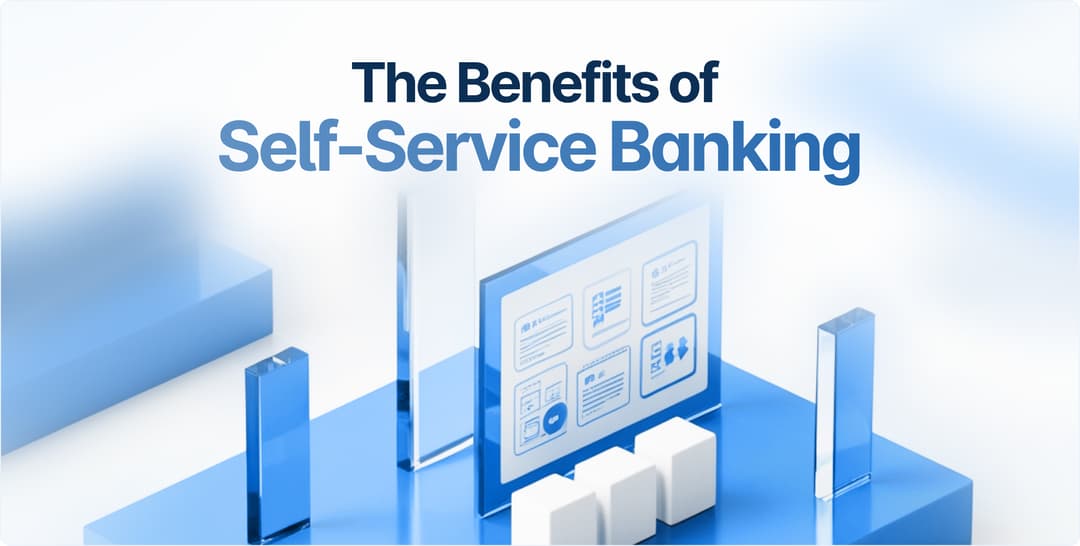You’re probably aware of how a knowledge-sharing platform can advance your business internally.
However, it’s worth noting that customer-facing knowledge bases and portals can also assist your customers and lower your customer-service costs in the process.
If you’ve already invested time and effort in creating a great knowledge base, it would be a shame to keep such a valuable resource hidden.
In this article, we’ll talk about the benefits of knowledge management portals and how you can adapt them to serve both your employees and customers.
Decreased Staff Training Costs
When the members of your support team are the only ones who can help clients solve their problems, you have to put them through extensive training.
However, knowledge management portals take some weight off their shoulders, which means that you get to cut costs by reducing training hours.
Staff training is an expensive process. The 2021 training industry report has revealed that training a new employee costs companies an average of $1,071.
The cost rises even higher for small companies.

Source: Training
The cost of training isn’t only detectable in the money spent.
The report also shows that it takes almost 64 working hours to train an employee—that’s more than a week and a half of downtime for each trainee.
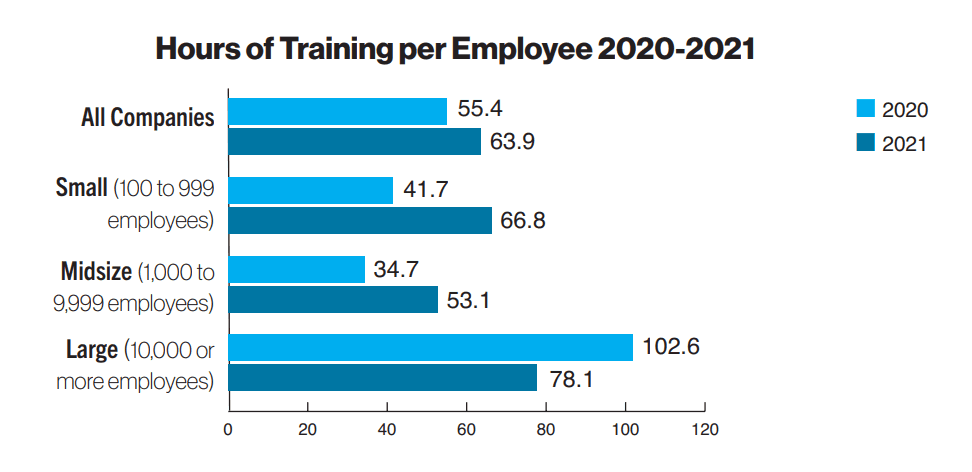
Source: Training
Luckily, a great benefit of knowledge management systems is that they double as a training tool.
In addition to helping the customers navigate your product, knowledge management portals can also bring all your employees up to speed, decreasing training costs.
For instance, Canva, an online design tool, has an extensive knowledge base where customers can find answers to their questions.
The following image shows some of the entries from the payments and billing section.
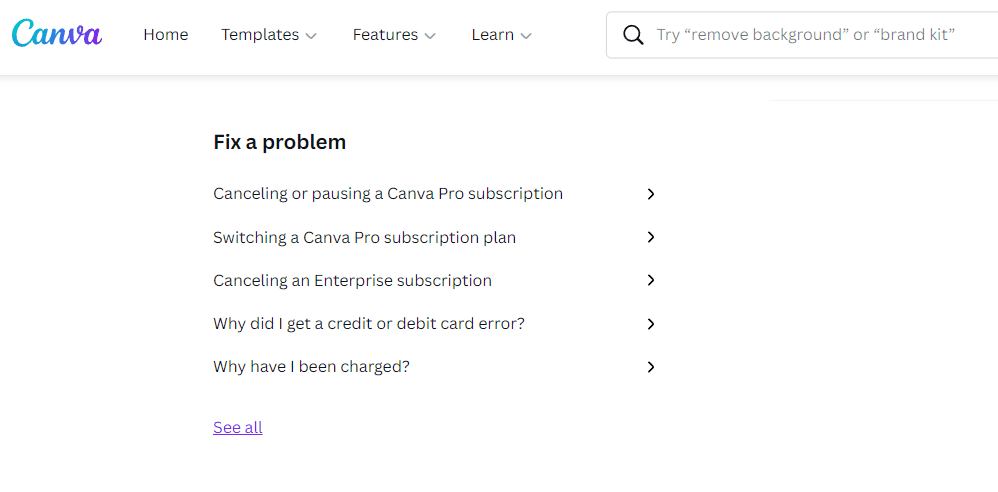
Source: Canva
So, the support team members can use the base as a way of getting to know the product in detail.
They are also able to search the base directly when answering written customer inquiries without having to memorize an overwhelming amount of details word by word.
All in all, educating your new support representatives with a knowledge management platform will help you shorten the training time while maintaining the quality of knowledge they receive.
That way, your employees will be able to answer customer questions confidently and efficiently.
Improved Team Productivity
Rather than creating custom materials for each support department, knowledge management portals provide a holistic overview of an entire product.
This benefit allows all team members to cooperate, regardless of the area of specialization.
When you look at an average knowledge base for clients, you’ll notice it’s arranged in multiple sections.
For example, PayPal’s help center covers the topics of personal, business, and technical help.
Selecting technical help shows that the section is further divided into categories covering APIs, shopping carts, and more.
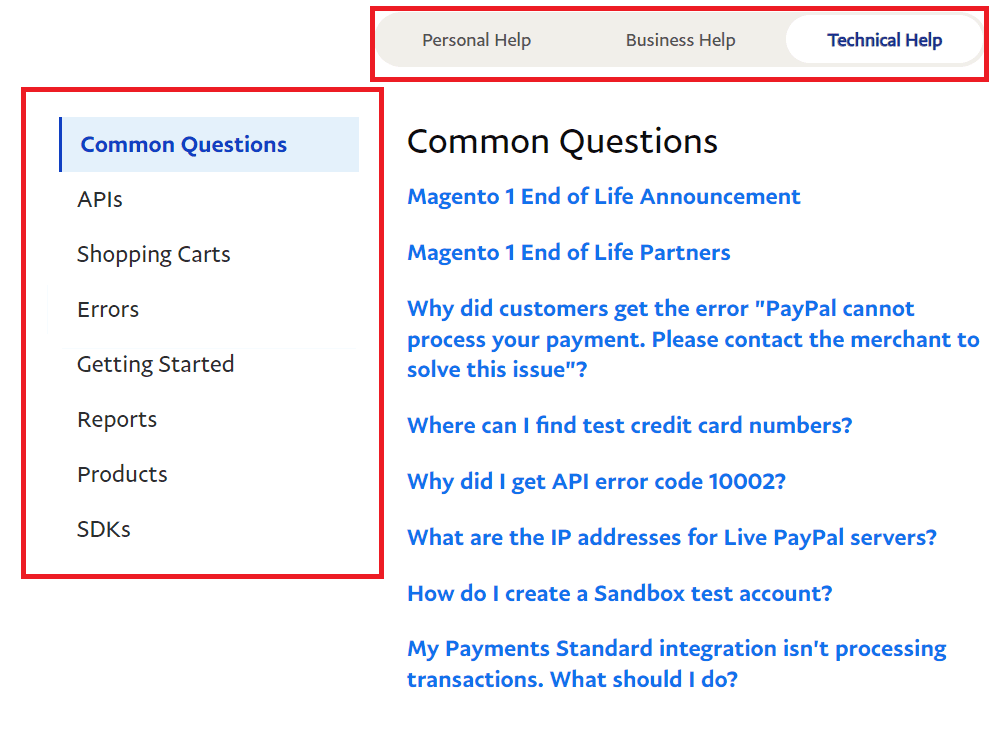
Source: PayPal
If your knowledge management portal looks something like this, you could go ahead and train your support representatives to become specialists in specific areas of your product.
However, such an approach doesn’t allow for cross-team collaboration.
To improve team productivity, you should equip each member of the support team with at least a base-level knowledge of the entire product so that they can jump in and help other team members when needed.
Your customer knowledge portal is an excellent tool for this because it shows your product from the client’s perspective.
Combine the portal with an internal knowledge base, and your employees will get to know the product inside out.
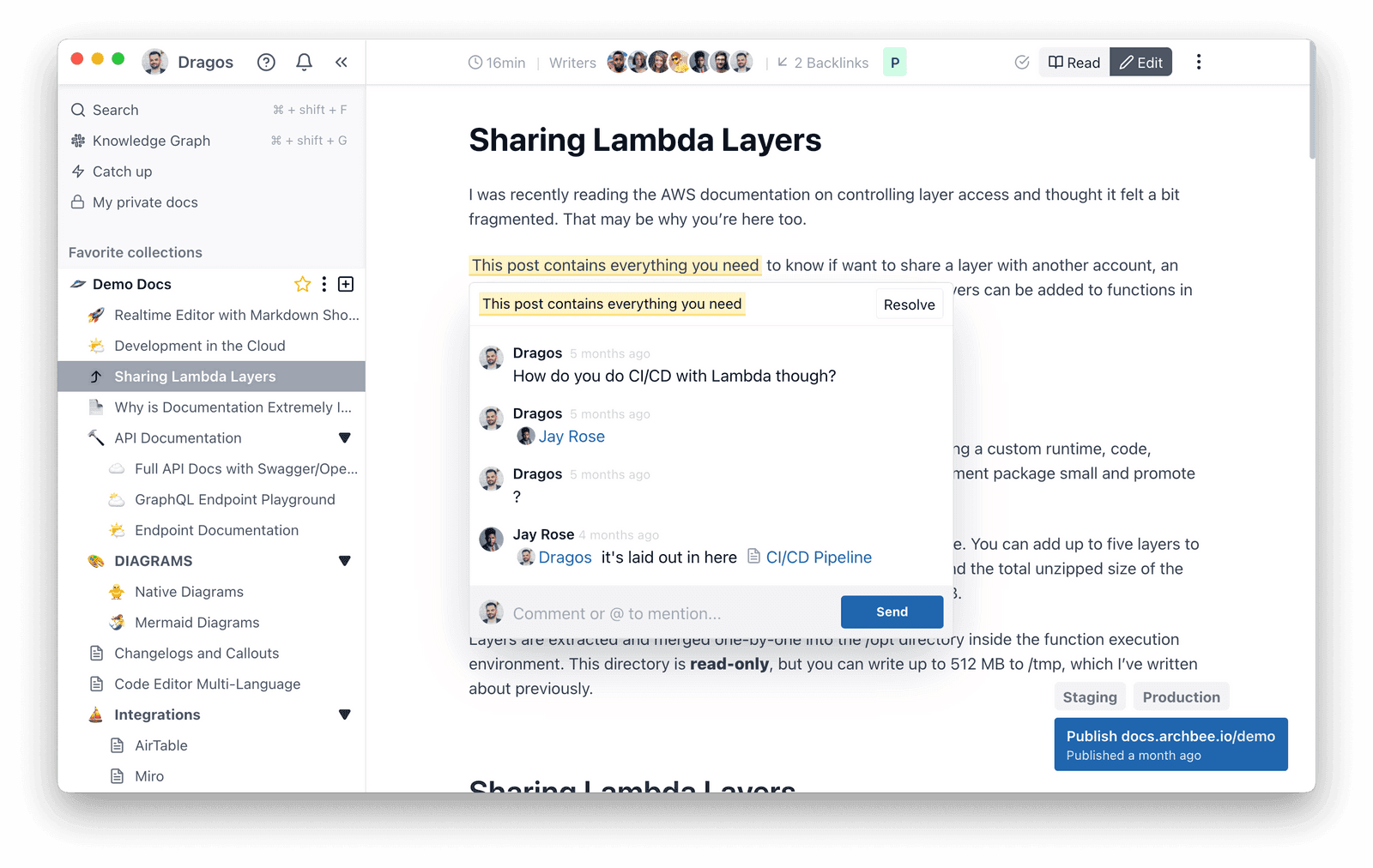
Source: Archbee
In addition to acting as a knowledge base for your existing team, knowledge management portals can also help you onboard new employees.
While training and onboarding materials are undoubtedly helpful, the amount of information can get overwhelming.
As witnessed by Christopher Tozzi, a technology analyst, you can’t expect new employees to memorize all product details immediately.
“Written documentation can reduce the need for long, in-person orientation meetings, but the reality is that few employees are going to go home and read your team’s onboarding guide cover-to-cover.”
Therefore, your searchable knowledge base can ensure team productivity by letting the members look up the necessary information on demand.
Companies that build their knowledge bases with Archbee, our documentation tool, make it possible for all users and employees to search the base in just a few clicks.
Here’s what the feature looks like in the documentation base of our client ChartHop.
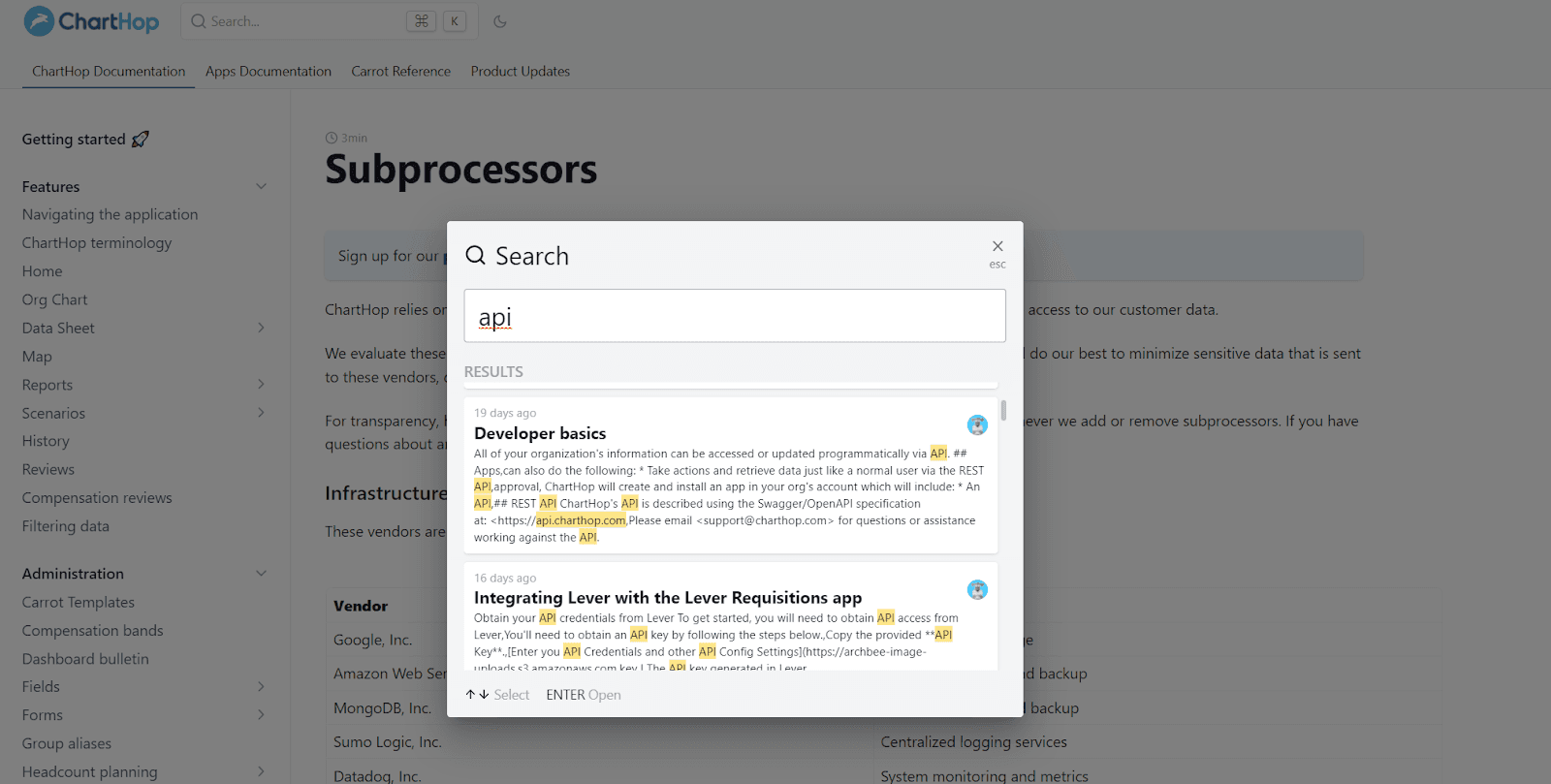
Source: ChartHop
As you can see, the tool highlights all mentions of the keyword and shows where more information can be found, so that the reader can easily continue their research journey.
Speaking of customers reading knowledge bases, let’s see how knowledge management portals benefit end-users.
24/7 Access to a Knowledge Sharing Portal
If you want to help your customers solve problems around the clock, your safest bet is to invest in a knowledge management platform.
One of the major benefits of knowledge bases is that they are available 24/7.
When a customer encounters a problem, they can look up the solution regardless of the time of the day or the nature of the issue.
Let’s take Grammarly, a text editor, as an example. The company’s help center covers several areas where customers can solve their issues.

Source: Grammarly
For instance, if a customer experienced problems downloading PDF reports, they could visit the knowledge center and find possible solutions already there.
Grammarly goes one step further and often includes visual content such as GIFs to demonstrate the steps customers can take more clearly.

Source: Grammarly
In such cases, customers don’t have to wait until the next day to contact the support; they can immediately identify the problem themselves and find the solution.
So, knowledge bases allow customers to solve problems whenever they want. You should also keep in mind that customers expect freedom in choosing the devices they use to reach your platform.
Although desktop and mobile devices have been neck and neck in recent years, mobile devices currently account for more than half (57%) of total internet traffic.
Therefore, if your customer wants to troubleshoot an issue, chances are they’ll use their smartphone to do so.
To ensure customer convenience, you should ensure your knowledge management platform supports mobile versions.
For instance, take a look at another example of ChartHop’s documentation that was built with Archbee.
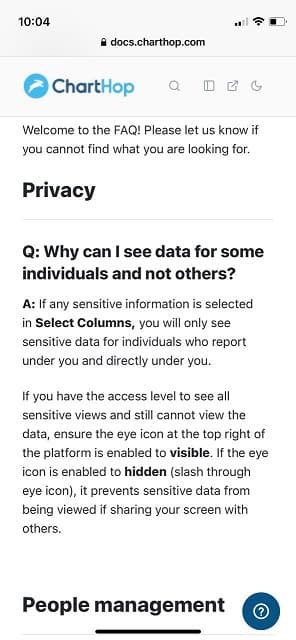
Source: ChartHop
The screenshot above was taken on a mobile device. As you can see, all knowledge base elements are still displayed as effectively as on a desktop.
The sidebar is collapsed, but it expands with a click, letting the customers continue browsing.
All in all, there’s no reason why your customers should wait a day until a support representative gets back to them whenever they have a question.
Choosing a good knowledge management platform will allow you to equip customers with helpful guides, explanations, and FAQs so that they can find relevant information at all times.
Fewer Support Tickets
When you enable the customers to solve fundamental issues on their own with a knowledge platform, the support team automatically gets fewer tickets.
Handling support tickets costs companies money. According to HDI, a support center, the average cost per minute of ticket handle time is $1.60.
This figure may not seem like a lot, but keep in mind that costs quickly accumulate.
Based on the cost per minute, HDI has calculated that it costs $15.56 to solve an average ticket. As the complexity of a ticket increases, so does the cost.

Source: HDI
So, it’s in your best interest to reduce the number of tickets you receive to a minimum.
And as we’ve concluded, the most straightforward way you can do that is by creating a user-friendly knowledge platform where users can find solutions to their problems on their own.
A plain list of questions and answers won’t do—you should categorize the inquiries instead.
That way, the customers won’t have to look far to see if their issues have already been discussed.
For example, here is an excerpt of the payouts FAQ from Stripe’s support knowledge base. As you can see, questions are divided into categories such as schedule, amount and reporting, negative balance, and more.
There are also popular topics that could help customers pinpoint their issues.

Source: Stripe
Sometimes, a customer can’t find their issue in the knowledge base. But there’s still one additional step you can ask them to take before filing a support ticket.
If you want to reduce the number of tickets your team gets and still allow customers to ask questions, you might want to create a discussion forum.
Take a look at Datree’s FAQ section in the company’s knowledge base powered by Archbee.

Source: Datree
Datree redirects support-related questions to a designated GitHub discussion board.
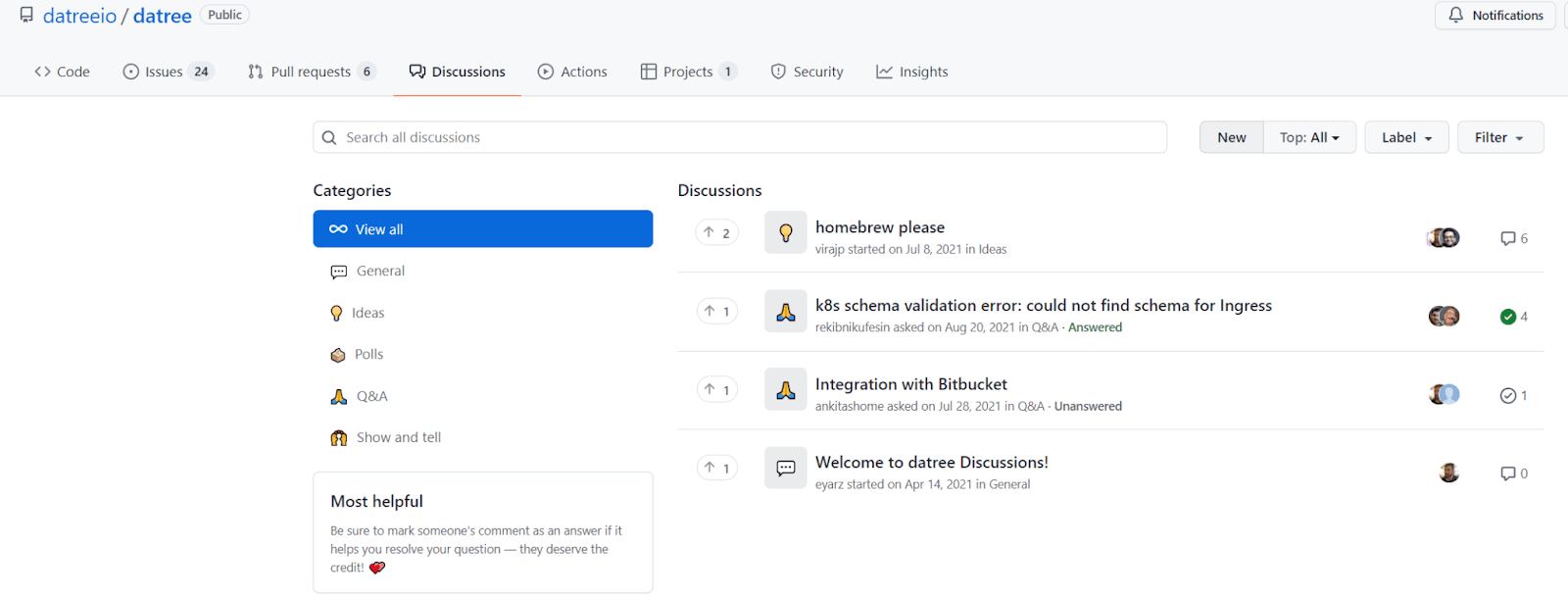
Source: GitHub
Users can use the board to ask other community members about their issues, reducing the amount of work for your support team.
To sum up, the more effort you put into creating a detailed knowledge management platform, the fewer support tickets you can expect.
This will ensure that only the customers with complex questions contact you, allowing the support team to focus on providing premium support without rushing from one ticket to the next.
Better Customer Insight
A valuable benefit of knowledge portals is that they let you see how users navigate your product. This helps you understand your customer base and adjust your practices accordingly.
Let’s revisit the phrase we’ve mentioned several times so far: frequently asked questions.
You’ve probably seen an FAQ section on almost every page you’ve visited, especially on software product sites.

Source: Asana
Even commonplace physical products, such as water bottles, often have FAQ sections. Here’s a screenshot of one created by the brand REBO.

Source: REBO
An FAQ section doesn’t indicate that a product or a service is complicated to use. On the contrary, it shows that the company has made an effort to improve user experience.
The effort is especially evident in companies that periodically update their FAQ pages.
For instance, if the customer insight shows people struggle with a specific feature, you can upgrade your knowledge management platform with an additional tutorial.
Customer insight can also go the other way around. Besides showing you what you should write more about, they can also reveal when a part of your product should be removed.
We’ll share our own example here.
Archbee, our product documentation platform, used to feature native diagrams.
However, we’ve noticed our clients didn’t find the feature smooth enough, so we’ve decided to remove it. Instead, we integrate with other diagramming software so that our clients can still build beautiful visualizations.
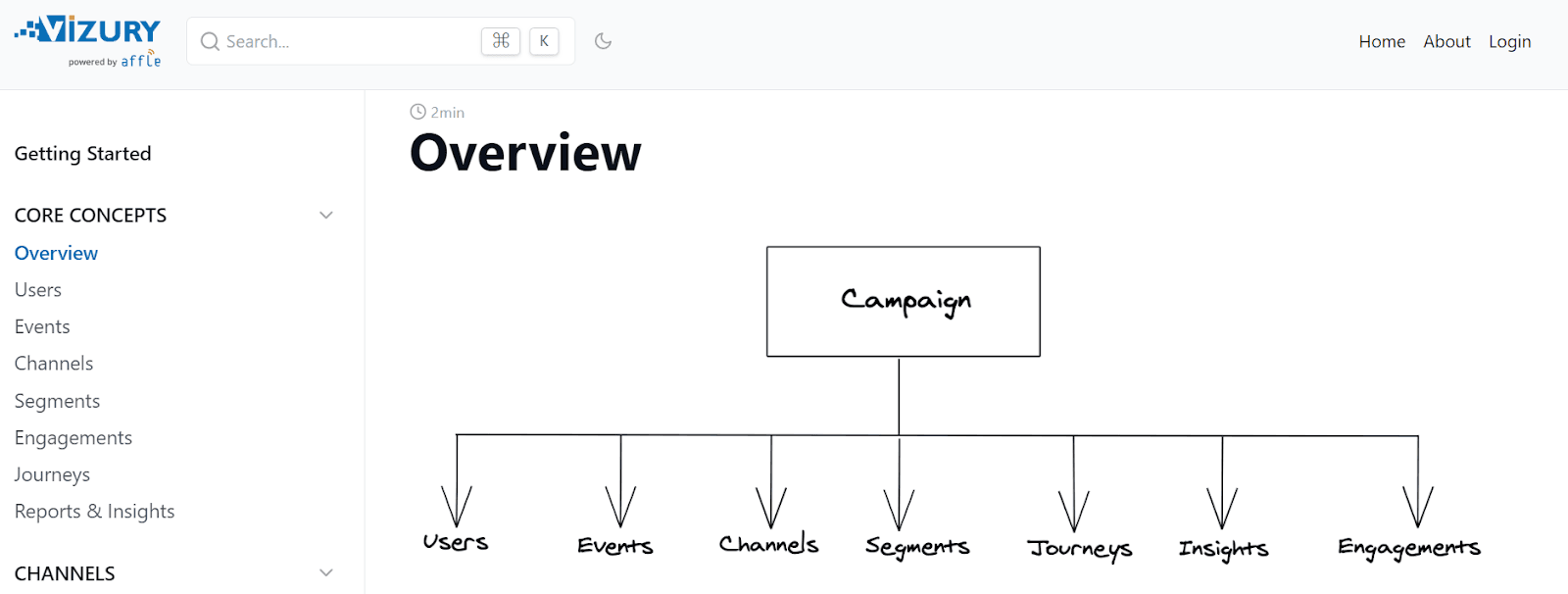
Source: Vizury
So, if it weren’t for customer insight, we wouldn’t have been able to improve our software as much.
However, being in tune with our clients has allowed us to shape the product according to their preferences.
If you’d like to be as responsive to your customers’ needs, you need a flexible knowledge base you can upgrade whenever a need arises.
In that case, you might be interested in Archbee’s knowledge management platform.

Source: Archbee
Its speedy editor allows you to upgrade the knowledge base in a matter of minutes.
When you combine a powerful tool like this one with customer insight, you’re on your way to growing your business.
Higher Company Revenue
Every problem your customers solve without contacting support is a sum of money you get to keep, leading to higher company revenue.
This is just one of the ways a knowledge management portal benefits your business financially.
As we’ve mentioned earlier, the average cost of handling a support ticket amounts to $15.56. A knowledge portal that empowers customers to troubleshoot their issues can remove this cost.
Of course, you can’t completely eliminate the need for having a support team. In fact, customer service can be a deciding factor in how much people are willing to spend.

Source: Archbee
So, to increase your revenue, you have to strategically construct your knowledge base and the way customers can reach out to you.
Your aim should be to provide customers with as much knowledge as you can and still be available for persistent or complex issues.
Here are the steps we suggest you incorporate into your knowledge platform:
- Start with a quick start guide
- Describe the setup instructions or prerequisites
- Write how to use each feature
- Address the FAQ
- Make it easy for users to contact you
As you can see, contacting support should be the last resort, but it should still be easily doable.
This approach will ensure a good balance between customers solving problems independently and leaving your staff the chance to make an impression with excellent customer service—both options result in higher revenue.
Lastly, knowledge management platforms can also increase revenue with SEO. Optimizing your knowledge portal can lead to more traffic, bringing in new potential customers.
That’s right; support pages can be an entry point to your product, so make sure yours are polished.
Conclusion
Building a knowledge management platform is not a process that has an end line; you have to constantly upgrade it so that it meets the needs of readers, both in-house and external.
However, this is precisely what makes it such a valuable resource.
A platform built with customers in mind helps you provide stellar customer service, unburdens your employees, and ultimately lowers the operating costs.
So, if you’ve thoughtfully built your product, we encourage you to approach your knowledge management portal with the same level of attention to detail.
Frequently Asked Questions
A well-built knowledge portal shortens ramp-up time and reduces the need for lengthy, instructor-led training. New hires and existing agents can self-serve answers, practice workflows, and look up details on demand instead of memorizing everything or shadowing for weeks. That means fewer training hours, less downtime, and lower costs. For context, the 2021 Training Industry Report pegs the average cost to train a new employee at about $1,071 and roughly 64 work hours. Centralized, up-to-date docs also prevent rework and keep everyone aligned, so you spend less time retraining when processes change.



